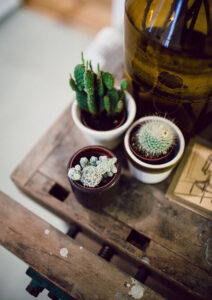Succulents have surged in popularity, captivating plant enthusiasts and the casual observer alike. Their striking forms and lush textures can instantly transform any space. This fascination goes beyond mere aesthetics; it raises questions about the reasons we are drawn to certain plant varieties. Understanding the enchanting realm of succulents illuminates not only the diversity within the plant kingdom but also the personal connections individuals forge with these green companions.
The delicacy of a succulent’s design often prompts admiration, yet there are underlying factors that contribute to their popularity. The perceived resilience of these plants, capable of thriving in various environments with minimal care, resonates with the modern individual’s lifestyle. However, the allure doesn’t stop there. The range of colors, shapes, and sizes of succulents invites exploration and collection, fueling a deeper fascination with these botanical wonders.
Let’s embark on a visual journey through some of the most popular succulent varieties, elucidating their unique characteristics and the reasons they capture our hearts.
Vivid Varieties: The Allure of Colorful Succulents
Colors in the plant kingdom serve as more than just striking visuals; they can also communicate health, attract pollinators, and create dynamic ecosystems. Succulents, with their diverse color palettes, embody this principle beautifully.
Consider the Echeveria, renowned for its rosette-shaped leaves that come in an array of stunning hues, such as lavender, blue, and deep red. Echeverias possess a waxy coating known as the cuticle, which not only protects them from drought but also enhances their vibrant coloring. This diversity makes them a popular choice among collectors and decorators alike, allowing for creative displays in any setting.
An equally striking variety is the Jade Plant (Crassula ovata), which transitions from a muted green to a lustrous red when exposed to ample sunlight. The Jade Plant is often regarded as a symbol of prosperity and good fortune in various cultures, adding an additional layer of significance to its appealing aesthetics.
The intricate details and vivid coloration of these succulents often inspire a therapeutic connection among owners, encouraging mindfulness and appreciation for the natural world.
Shapes and Sizes: The Fascinating Geometry of Succulents
Beyond their vibrant hues, the structural diversity of succulents is particularly captivating. Their varied shapes demonstrate unique evolutionary adaptations, reflecting their survival strategies in arid habitats.
The Haworthia, for instance, is characterized by its intricate rosettes with distinct, pointed leaves that exhibit striking patterns. These patterns can mimic the appearance of zebra stripes or latticework, showcasing nature’s ability to manifest complex geometrics. Collectors find joy in exploring these variations, often displaying them in artistic arrangements that emphasize their architectural beauty.
On the other end of the scale, the lustrous Aloe Vera stands tall with its sword-like leaves, offering both aesthetic appeal and practical benefits. Not only does Aloe produce vibrant blossoms, but it also provides soothing gel that has utilitarian purposes in skincare and medicinal remedies. Its duality as both a decorative object and a useful plant enhances its desirability, encouraging a connection that extends beyond mere visual appreciation.
Textures and Tactile Experiences: Engaging with Succulents
Succulents are not just visually stimulating; their textures provide a tactile allure that invites interaction. The tactile experience of handling these plants can reinforce connections between the observer and their surrounding environment.
The Orbea, specifically Orbea variegata, captivates with its star-shaped blooms that are covered in a velvety texture. This species offers a unique olfactory experience, emanating a distinct aroma that draws in pollinators. The surprising textural experience creates a multi-sensory interaction, engaging admirers on a deeper level.
Additionally, the spiny allure of the Agave family embodies a different form of touch. Their sharp leaves and robust structures not only evoke a sense of strength but also establish boundaries that protect them against predators. This paradoxical relationship of beauty and danger compels aficionados to appreciate succulent adaptations in their native habitats while contemplating the environmental conditions that shape these characteristics.
Growing Connections: Cultivating a Passion for Succulents
As individuals cultivate their own succulent gardens, a deeper connection with nature is forged. Each plant becomes a personal narrative, encapsulating memories of acquisition and growth. Over time, enthusiasts often find themselves drawn into communities dedicated to sharing knowledge, which further enriches their experience. Online forums, social media groups, and local clubs offer spaces for exchanging insights, propagation methods, and creative displays, creating networks of like-minded individuals.
In conclusion, succulents represent more than just a trend in horticulture. Their vivid colors, diverse shapes, and tactile experiences build a complex relationship between humans and the natural world. This fascination persists as casual observers become devoted enthusiasts, diving headfirst into the colorful, geometric, and sensory-rich universe of succulent varieties. As we continue to appreciate these remarkable plants, it becomes evident that their appeal is deeply rooted in more than just their allure; it resonates with our human inclination to seek beauty, connection, and understanding in our environment.





Leave a Comment